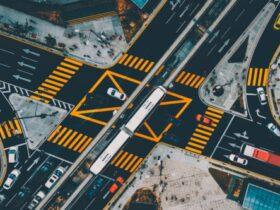Humans might be probably the greatest barricade keeping completely independent vehicles off city roads. One of the chances that a robot will explore a vehicle securely through midtown Boston is the robot would have the option to foresee what is close by drivers, cyclists, and walkers will do straightaway.
Conduct expectation is an extreme issue, and current artificial intelligence reasoning arrangements are either excessively short-sighted (they might accept people on foot generally stroll in an orderly fashion), excessively moderate (to stay away from walkers, the robot simply leaves the vehicle in the middle), or can gauge the following moves of one specialist (streets commonly convey numerous clients without a moment’s delay). MIT scientists have concocted a misleading basic answer for this confounded test. They break a multiagent conduct expectation issue into more modest pieces and tackle every one separately, so a PC can settle this perplexing assignment continuously.
Their conduct expectation structure first theories the connections between two street clients — using artificial intelligence in the industry which vehicle, cyclist, or walker has the option to proceed, and which specialist will yield — and involves those connections to foresee future directions for a considerable length of time.
These assessed directions were more precise than those from other AI models, contrasted with genuine traffic streams in a huge dataset aggregated via independent driving organization Waymo. The MIT method even beat Waymo’s AI model. Furthermore, on the grounds that the specialists broke the issue into less difficult pieces, their method utilized less memory.
“This is an extremely instinctive thought; however, nobody has completely investigated it previously, and it functions admirably. We are contrasting our model and another cutting edge AI models in the field, including the one from Waymo, the main AI in Industry around here; and our model accomplishes top execution on this difficult benchmark. This has a ton of potential for the future,” says co-lead creator Xin ‘Cyrus’ Huang, an alumni understudy in the Department of Aeronautics and Astronautics and an examination partner in the lab of Brian Williams, teacher of aviation and astronautics and an individual from the Computer Science and Artificial Intelligence Laboratory (CSAIL).
Joining Huang and Williams on the paper are three analysts from Tsinghua University in China: co-lead creator Qiao Sun, an exploration partner; Junru Gu, an alumni understudy; and senior creator Hang Zhao PhD ’19, an associate teacher. The examination will be introduced at the Conference on Computer Vision and Pattern Recognition.
Different little models
The scientists’ AI models, called M2I, take two contributions: past directions of the vehicles, cyclists, and people on foot collaborating in a rush hour gridlock setting like a four-way convergence, and a guide with road areas, path setups, and so on.
Utilizing this data, a connection indicator derives which of two specialists has the option to proceed first, ordering one as a passer and one as a yielder. Then, at that point, an expectation model, known as a peripheral indicator, surmises the direction of the passing specialist, since this specialist acts autonomously.
A subsequent AI model, known as a contingent indicator, then thinks about what the yielding specialist will do in light of the activities of the passing specialist. The framework predicts various directions for the yielder and passer, figures the likelihood of every one exclusively, and afterward chooses the six joint outcomes with the most noteworthy probability of happening.
M2I yields an expectation of how these specialists will travel through traffic for the following eight seconds. In one model, their strategy made a vehicle delay down so a person on foot could go across the road, then, at that point, accelerate when they cleared the convergence. In another model, the vehicle held on until a few vehicles had passed prior to abandoning a side road onto an occupied, fundamental street.
True driving tests
The scientists prepared the models utilizing the Waymo Open Motion Dataset, which contains a huge number of genuine traffic scenes including vehicles, people on foot, and cyclists recorded by lidar (light location and running) sensors and cameras mounted on the organization’s independent vehicles. They zeroed in explicitly on cases with different specialties.
To decide exactness, they looked at every strategy’s six forecast tests, weighted by their certainty levels, to the genuine directions followed by the vehicles, cyclists, and walkers in a scene. Their strategy was the most dependable. It additionally beat the pattern models on a measurement known as cross-over rate; assuming two-direction cross-over, which demonstrates an impact. M2I had the most minimal cross-over rate.
“Instead of simply assembling a more mind-boggling model to take care of this issue, we adopted a strategy that is more similar to how a human thinks when they reason about associations with others. A human doesn’t reason pretty much every one of the many mixes of future ways of behaving. We go with choices very quick,” Huang says.
One more benefit of M2I is that, since it separates the issue into more modest pieces, it is simpler for a client to comprehend the model’s independent directors. Over the long haul, that could end up being useful to clients, placing more confidence in independent vehicles, says Huang.
Yet, the structure can’t represent situations where two specialists are commonly impacting one another, similar to when two vehicles each push forward at a four-way stop on the grounds that the drivers don’t know whom you ought to yield.
Link: https://www.analyticsinsight.net/how-is-artificial-intelligence-anticipating-peoples-behaviour-on-road/?utm_source=pocket_mylist
Source: https://www.analyticsinsight.net

















Leave a Reply